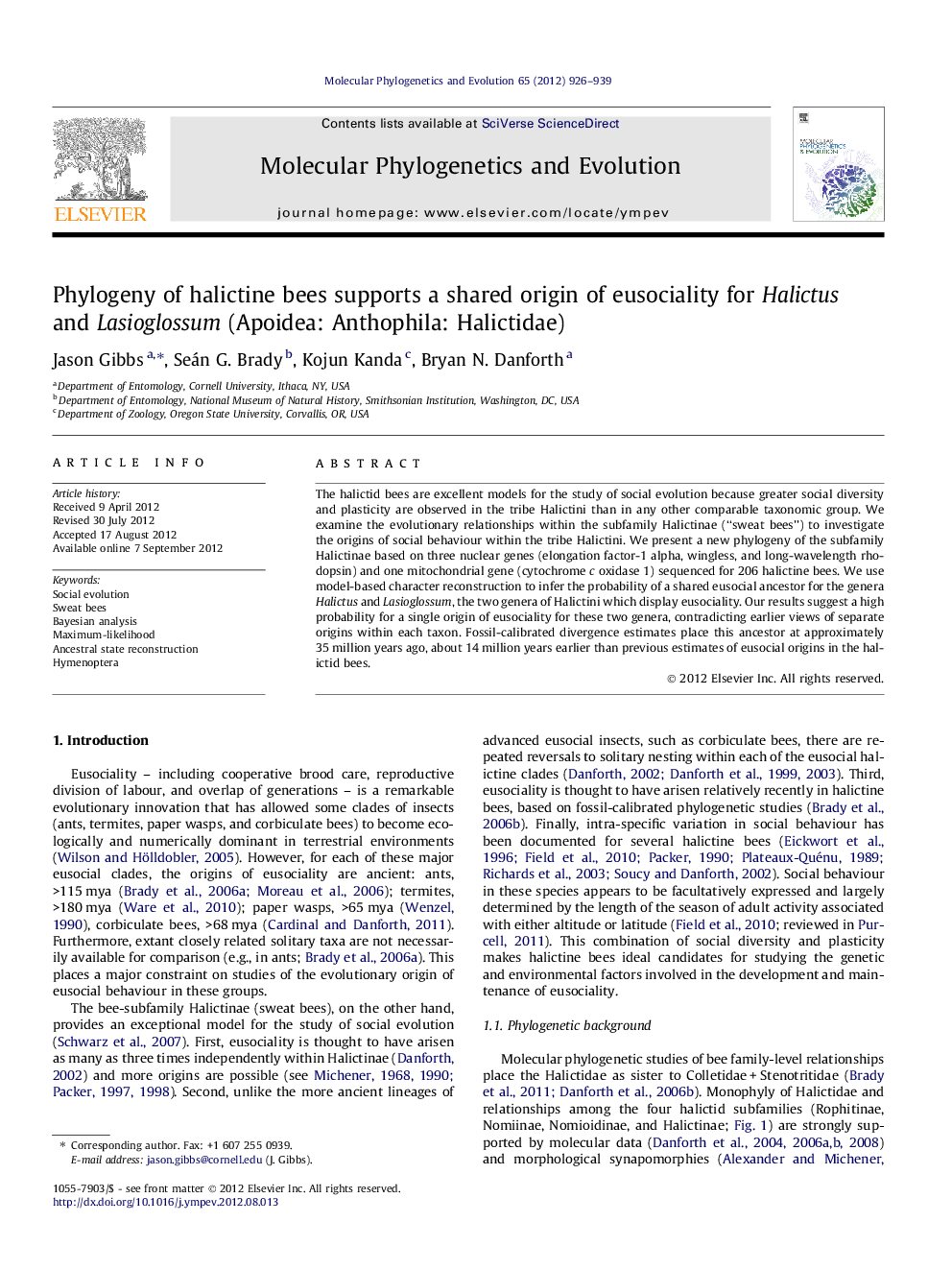| Article ID | Journal | Published Year | Pages | File Type |
|---|---|---|---|---|
| 5920132 | Molecular Phylogenetics and Evolution | 2012 | 14 Pages |
The halictid bees are excellent models for the study of social evolution because greater social diversity and plasticity are observed in the tribe Halictini than in any other comparable taxonomic group. We examine the evolutionary relationships within the subfamily Halictinae (“sweat bees”) to investigate the origins of social behaviour within the tribe Halictini. We present a new phylogeny of the subfamily Halictinae based on three nuclear genes (elongation factor-1 alpha, wingless, and long-wavelength rhodopsin) and one mitochondrial gene (cytochrome c oxidase 1) sequenced for 206 halictine bees. We use model-based character reconstruction to infer the probability of a shared eusocial ancestor for the genera Halictus and Lasioglossum, the two genera of Halictini which display eusociality. Our results suggest a high probability for a single origin of eusociality for these two genera, contradicting earlier views of separate origins within each taxon. Fossil-calibrated divergence estimates place this ancestor at approximately 35Â million years ago, about 14Â million years earlier than previous estimates of eusocial origins in the halictid bees.
Graphical abstractDownload full-size imageHighlights⺠The sweat bees (Apoidea: Halictidae) are the most socially diverse group of insects. ⺠A new phylogeny of the sweat bees is presented with a focus on the tribe Halictini. ⺠Bayesian and maximum likelihood ancestral state reconstructions were used. ⺠A shared origin of eusociality for Halictus and Lasioglossum was inferred. ⺠Fossil-calibrated dating estimates time of origin of eusociality in the Halictini.
